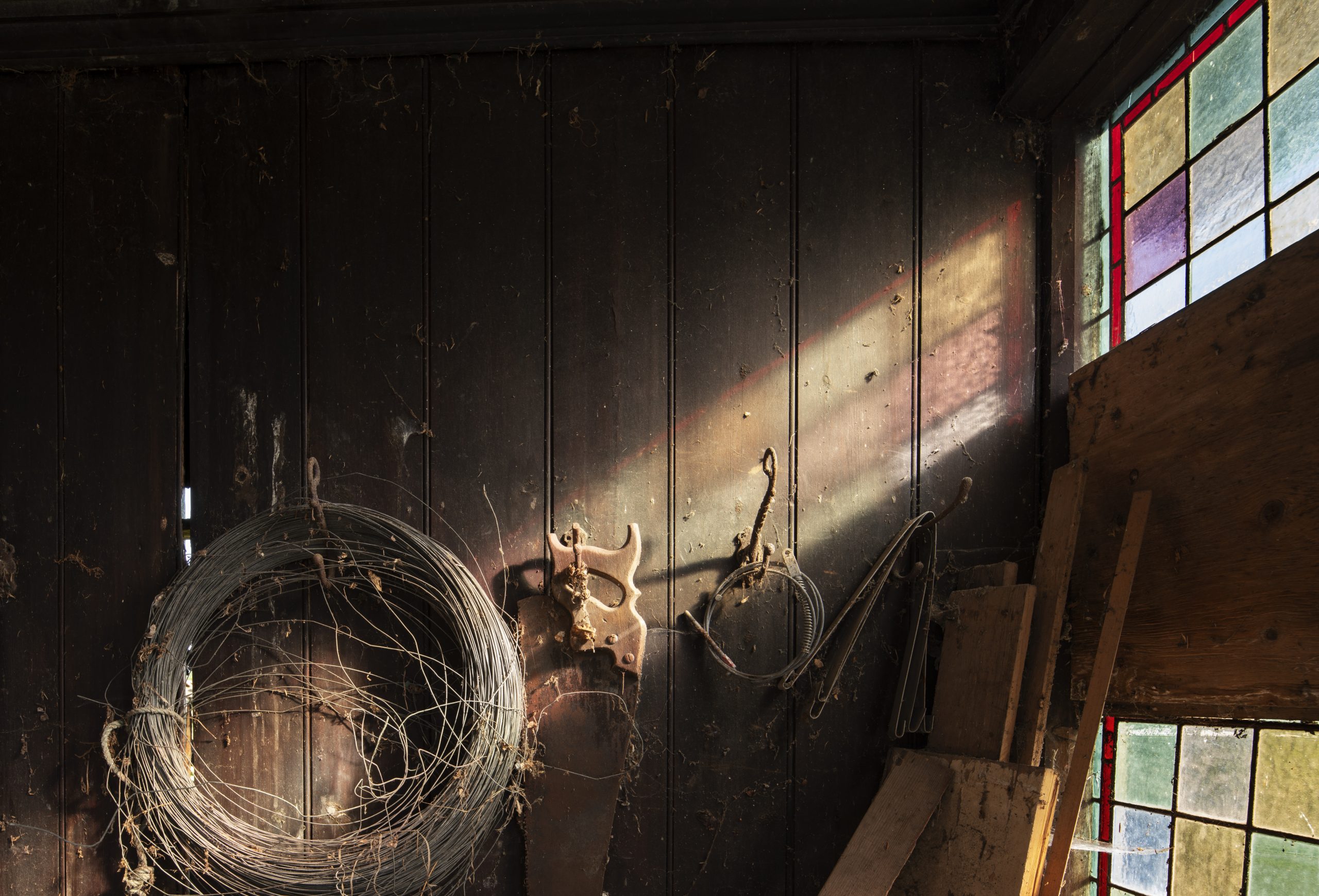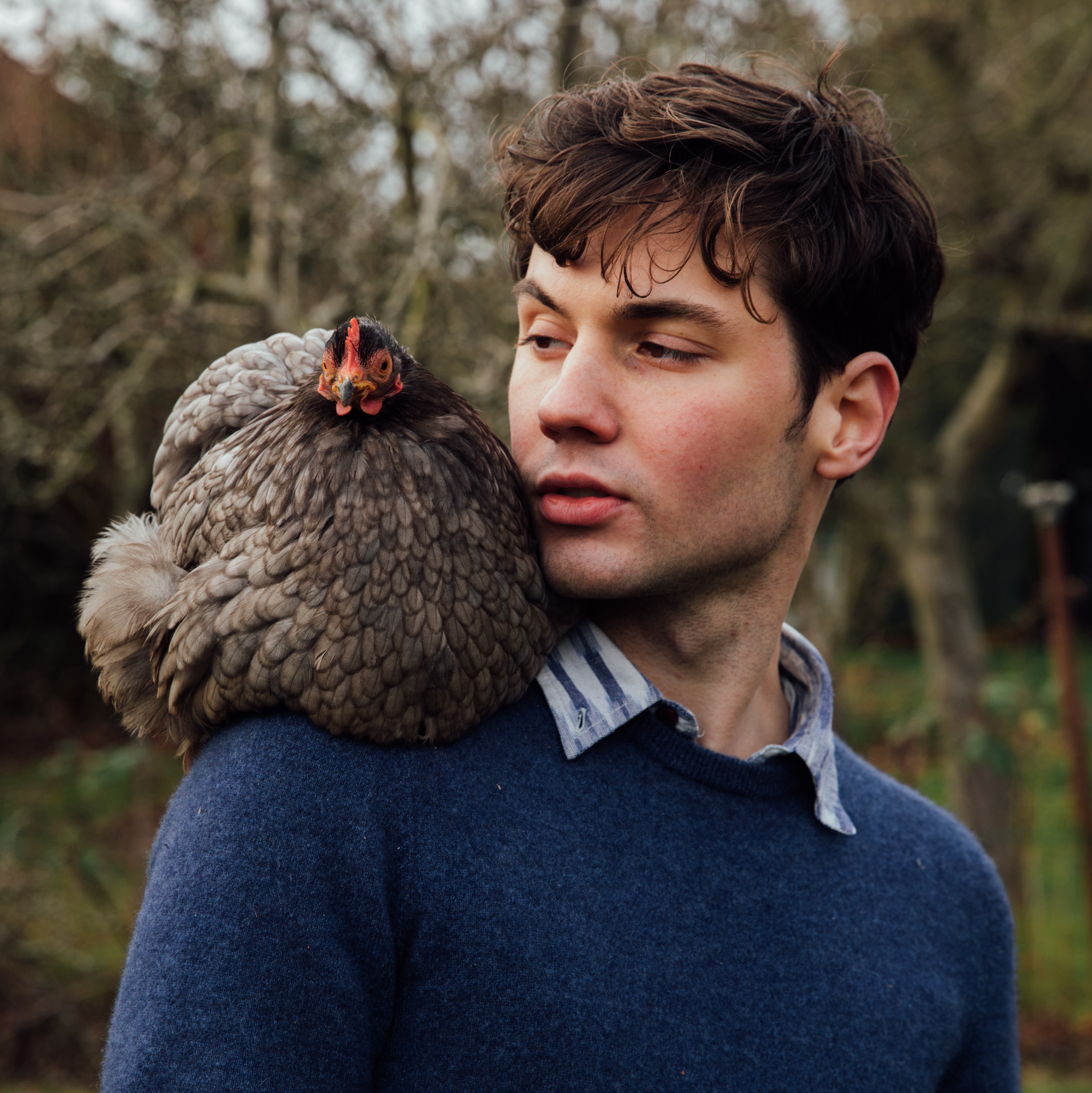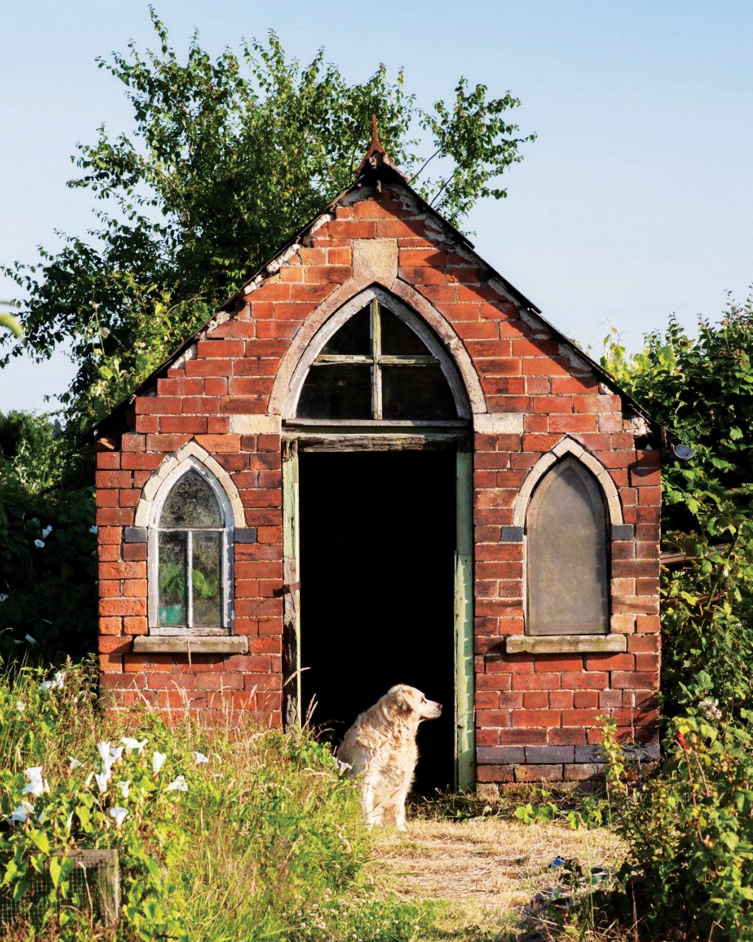When sheds become art: The 'mini temples' that stand proud on 200-year-old allotments
Arthur Parkinson marvels at the spectacular sheds of Stoney Road Allotments.


I love allotment spotting from the train. On a recent journey, the carriage was so packed that I had to stand in the dark connecting part, which felt like being held within the body of a wiggly, fat caterpillar. Seeking some decent air and daylight, I walked into the almost empty first-class carriage and stood fixedly looking out of the window, making sure I didn’t catch the eye of any of the other passengers.
The train was pulling out of Coventry station and, soon, a patch-worked allotment plot with all the usual curiosities came into view. But I quickly noticed something unusual. Some of its sheds looked like mini temples of brick, with ornately tiled roofs. They sparkled exotically in the cold sun. I pulled out my phone and searched Google maps, discovering that I had spotted the Stoney Road Allotments that cover some 12 precious acres. Now just south of Coventry’s city centre, the site goes back to the mid 12th century, when Cheylesmore Park belonged to the Earl of Chester, but, by 1807, the plot had been laid out as small gardens for local people.
When I got home, I did more research. Standing within its surviving 80 plots, divided up by sparrow cathedrals of hawthorn hedges, are seven summerhouses from the late 19th and early 20th centuries. Hobbit-like in size, with footprints of 10 and six square yards, five are now individually listed as Grade II buildings. Apparently, families often used to sleep in them to protect their crops from possible theft.
One is half-timbered and gabled with fishscale tiles and one surviving pane of stained glass. Some are panelled inside, with small fire-places. Two are of Gothic design, with pointed windows and doors. After concern for their condition was raised, the future of three of them was secured last year with a restoration grant of £63,000 to Coventry City Council from Historic England. The aim is to ensure they are weather resistant and cleared of naughty bramble whips, so they can continue to be used — perhaps as the most beautiful and inspiring sheds that can be found in Britain today. Hopefully, work will follow on the others.

After all, behind every great garden, somewhere, there will be a shed — probably decorated with spiders’ webs. Such places are rare in this regularly dusted modern age of garden offices and shepherds’ huts. But, tool shed or summerhouse, these buildings have a practical and honest elegance: they are what they are.
The newly installed, freshly painted sheds of today scream for attention and can ruin a garden. Far better instead to scour the preloved adverts for weathered structures that will add instant romance — and then paint them with a clear-drying preserver. When we were children, my dad instructed me and my brother to paint the shed that sat, god-like, in our typical semi-detached garden. The paint turned out to be the shade of a rich tomato soup. This ill-thought-out episode no doubt nudged my parents to separate.
Light is the often-forgotten essential that transforms a shed into a place where you can sit and ponder as the sun filters through the window. Without light, they end up being storage dumps, the door shut and sharply bolted.
Sign up for the Country Life Newsletter
Exquisite houses, the beauty of Nature, and how to get the most from your life, straight to your inbox.
The somewhat mystical half shed, half greenhouse of my childhood belonged to my grandparents’ friend, John. My grandad Ted was a builder, but also a hoarder and took great pleasure in giving John all manner of treasures rescued from demolition jobs for his allotment. With these, the pair built the most curious of sheds, with so many doors that trying to gain entry involved a game of guessing which was the real one; it was a Crystal Palace of creations.
Looking back, it must have been quite the furnace in summer, but I remember it being a picture postcard of allotment life, with John’s collie dog asleep on some old carpet, trays of eggs and chitting potatoes, the whole completed by fusty armchairs, their arms worn down to the mud-camouflaged stuffing. They basked in the sun, beckoning comfort. Such is the art of a productive, slumbering mess.
One day, I hope to have such a shed, where I shall settle myself, like an Alan Bennett character, and spend my days among stacks of terracotta Sankey Bulwell pots. My current shed has — fatally — no windows; try as I might to organise it, it is always a tip. It does, however, have a stable door. When the bottom half is open, the hens dash in and, like feathered hoovers, clear every nook and cranny. No spiders dare set up camp here.
Arthur Parkinson is a gardener, writer and broadcaster. He trained at the Royal Botanical Gardens, Kew before working for Sarah Raven and as the head gardener at the Emma Bridgewater factory garden. He is the author of four books including 'Flower Yard: Growing Flamboyant Flowers in Containers'.
-
 Ford Focus ST: So long, and thanks for all the fun
Ford Focus ST: So long, and thanks for all the funFrom November, the Ford Focus will be no more. We say goodbye to the ultimate boy racer.
By Matthew MacConnell
-
 ‘If Portmeirion began life as an oddity, it has evolved into something of a phenomenon’: Celebrating a century of Britain’s most eccentric village
‘If Portmeirion began life as an oddity, it has evolved into something of a phenomenon’: Celebrating a century of Britain’s most eccentric villageA romantic experiment surrounded by the natural majesty of North Wales, Portmeirion began life as an oddity, but has evolved into an architectural phenomenon kept alive by dedication.
By Ben Lerwill